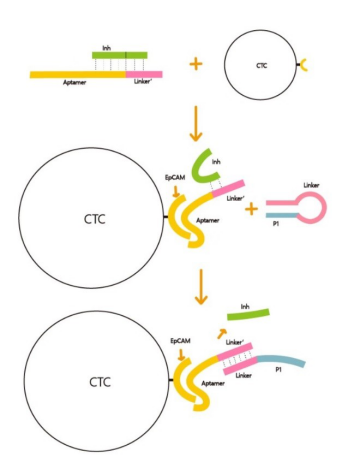Date:Nov 21, 2019
On November 4thET, the closing ceremony of 2019 International Genetically Engineered Machine Competition (iGEM) was held in Boston, USA. Two teams from DUT won gold medals, which is a breakthrough after last year’s single silver medal and nomination award for the best new application. Two teams from DUT this year consist of 31 members, with 21 of them coming from the School of Bioengineering, and the remaining 9 members from 9 different majors including applied chemistry, automation, software engineering, environmental engineering and architecture. Associate Professor Yang Jun, Han Lulu, Kong Fantao and Senior Engineer Zi Lihan from School of Bioengineering served as team instructors.
iGEM was first initiated by Massachusetts Institute of Technology (MIT). It requires teams to finish prediction, manipulation, and measurement of artificial biological systems, which need to use standard biobricks to build genetic circuits and effective mathematical models.
The two projects that won the gold medals this year are “Capture of circulating tumor cells with DNA hydrogel” and “Design of light controllableC. reinhardtiimicro-robot”.
Cell in CELL

Design and extraction of circulating tumor cells using DNA hydrogel capture
In order to address the difficulties on recognition, visualization, and capture of living CTCs with high purity and integrity, the team constructed a multifunctional DNA hydrogel like a prison CELL capsuling CTCs, and defined this new platform as "cell in CELL" (CiC). With this strategy, clinics may have a new way to understand the condition of the patients while the researchers can have the opportunity to obtain the CTCs with high biological activity. The strategy contains three vital parts, the fluorescence-labeled ssDNA aptamers, switches and DNA hydrogels.
(i) The fluorescence-labeled ssDNA aptamers specifically binds to the receptors of CTCs and visualize them.
(ii) Once successfully targeting CTCs, the ssDNA aptamers will expose the sticky end further for triggering the adhesion of sticky-end pairing ssDNA. This process is the switch of the formation of DNA hydrogel around CTCs.
(iii) The pairing ssDNA can induce two sequential processes: (a) a rolling circle amplification (RCA, or R) followed by (b) a multi-primed chain amplification (MCA, or M), making CTCs enveloped with hydrogels. This step can enlarge the size of CTCs for centrifugal isolation. After being treated with exonucleases, CTCs are released intactly with high activity.
Compared to other methods, the strategy of DUT team is more superior in these ways. Firstly, adopting the unique combination of RCA and MCA, the team can achieve a controllable size and morphology of the DNA hydrogel. Secondly, CTCs are extremely rare and they are same in size and similar in shape as the leucocytes. The device can magnificate the difference and make the subsequent isolation convenient. Thirdly, the traditional capture methods based on DNA hydrogel monomers consume a big amount of nucleate acid. The strategy is able to cut down the costs.
Bio-microrobot: A Light DrivenC.reinhardtii

Circuit design of red-light control light converter
Marvel's superhero ant man has aroused DUT team’s interest in micro-robots, Chlamydomonas reinhardtii is a kind of eukaryotic, photosynthetic model organism with two flagella which has phototaxis towards blue light. That’s why the team wanted to design a light-controlled micro biological algae robot focusing on expanding the sensitivity spectrum of Chlamydomonas reinhardtii. The team designed from two perspectives: on the one hand, transforming channel rhodopsin, the key photosensitive structure in the system, they exogenously expressed the rhodopsin channel mutant VchR from the volvox to make it feel the orange light of 589 nm; on the other hand, designing a light converter to realize the activation of endogenous blue light to movement, they take the red light-controlled protein PhyB/Pif3 as an example, combining them with the split Renilla luciferase, which is regarded as a general idea of designing light converter and completely created by themselves. In the end, they provided a scheme for controlling Chlamydomonas movement under UV light, 589 nm, and 660 nm in addition to blue light, and three kinds of engineered algae. Due to the weak catalytic luminescence intensity of Rluc, they chose NanoLuc from registry, which has stronger catalytic luminescence to generated stronger endogenous blue light to activate Chlamydomonas movement, and established a model to predict its cleavage site, providing a simple split protein prediction method.
The team has prepared carefully this year by organizing summary meetings and absorbing successful experience from traditional outstanding teams, and laid a solid foundation for the establishment of this year’s new teams. Since December in 2018, School of Bioengineering has invited synthetic biology experts such as Zhang Haoqian and Zhou Yongjin, and iGEMers from Peking University and Shanghai Jiaotong University, etc., into the class of the innovation and experiment practicing class. Communications with them strengthened the comprehensive understanding of synthetic biology and the iGEM competition rules, and systematically training of literature search, experiment operations and team building had cultivated fresh troops for this year’s competition.
In recent years, the School of Bioengineering of Dalian University of Technology, with the support of the International Office, the Academic Affairs Office, the Alumni Office and the School of Innovation and Entrepreneurship, etc., has established a platform based on first-class disciplines and supported students to participate in various discipline competitions, encourage them to go abroad and contact the frontier development areas of the disciplines, which has achieved practical results in cultivating compound talents with excellent scientific research, international vision and innovative spirit.
It is reported that the International Genetically Engineered Machine Design Competition (iGEM) is an internationally authoritative academic competition for students in the field of synthetic biology. It was founded in 2003 by Massachusetts Institute of Technology and became an international event in 2005. In 2019, iGEM attracted 375 teams from more than 40 countries, with more than 4,000 students from Harvard University, MIT, Imperial College Universities, Peking University, Tsinghua University and other top universities in the world competing on the same stage. As a top event in the field of synthetic biology, the research results of participated teams are widely concerned by international top academic journals such as Nature, Science, Scientific American, and Economist.